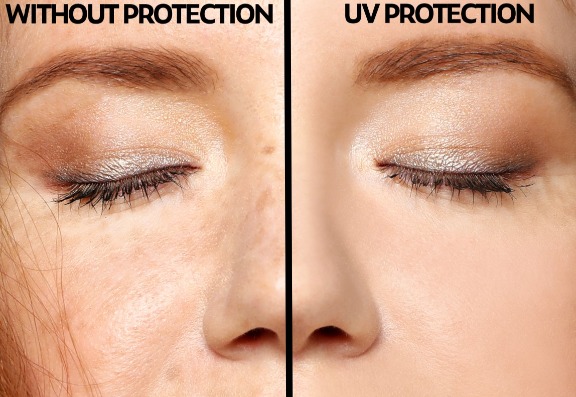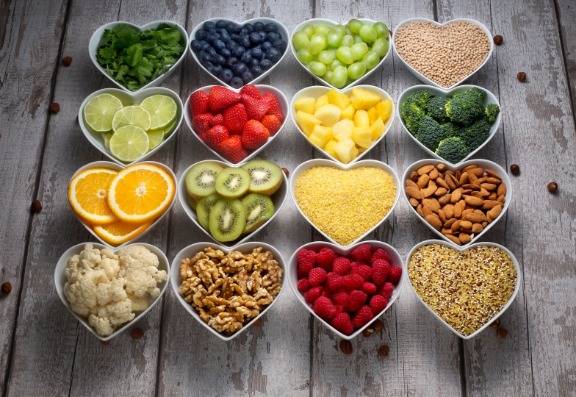Skin ageing happens due to intrinsic and extrinsic ageing.
As we age, the rate of loss of the old skin cells from the uppermost layer of the skin (stratum corneum) slows down. The skin gradually gets less translucent and does not retain water so well.
All the skin functions take place more slowly in mature skin. Collagen and elastin fibres which form the framework of the skin begin to loosen. This is intrinsic ageing.
Understanding skin ageing
Extrinsic ageing primarily occurs due to ultra-violet, UV Rays. As most of us have been exposed to the sun to a greater or lesser degree over many decades, the 'damage' to the dermis can be seen even through the dry epidermis as we age. Other causes of extrinsic ageing are:
- Chemical pollutants
- Poor nutrition
- Starvation diets
- Physical
- Mental stress
- Smoking
- Alcohol
- Inadequate sleep
- Lack of exercise.

How to understand skin ageing
The rate at which our skin changes is dependent to some extent on what we inherited in the first place, how we treated it and how we looked after it.
Signs of skin ageing:
- Dull skin
- Uneven tone
- Rough texture
- Age spots and blemishes
- Fine lines
- Wrinkles - crow’s feet, frown lines, forehead lines
- Sagging jawline
- Prominent laugh lines
- Bags under eyes
- Dark circles under eyes
- Dilated pores
- Loss of underlying fat, leading to hollowed cheeks and eye sockets.
- Skin tags, moles, seborrhoeic keratoses appear
- Bands on neck (Chicken legs)
- Wrinkled and loose skin on hands and feet
A varied number of vitamins and minerals are necessary for healthy skin. Vitamin A prevents skin from becoming dry and flaky, vitamin C is important for the production of collagen and vitamin E helps to rehydrate the skin, damp down inflammation and speed up the healing process.

Understanding skin ageing
Minerals and anti-oxidants combat free radicals and help retain the youthfulness of skin.
Proteins and biotin are required for healthy hair and nails. It is interesting to note that water, vegetables and fruits like watermelon, walnuts, olive oil (an antioxidant), fish like salmon and mackerel (which contain omega 3 fatty acid) are moisturisers for the skin.
Colourful berries like strawberries, blueberries, raspberries, plus oranges and carrots (which contain betacarotene) act as antioxidants and protect from the sun.
how to understand skin aging
Fish with omega 3 fatty acids and proteins like chicken and lean meat as well as flax seeds are known to prevent fine lines and wrinkles.
It is also wise to avoid smoking as cigarette smoke and tar deprive the skin of the nutrients and oxygen it needs, ultimately leaving it looking dull and lifeless. They lead to the formation of harmful free radicals and weaken the collagen and elastin fibres, with the result that the skin becomes prematurely wrinkled.
In order to prevent the skin from looking tired and fatigued, regular daily protection against the sun from an early age, combined with the regular use of well-formulated moisturisers, is necessary. Basic skin care should comprise of cleansing regularly with mild products. Avoid the sun. Use a daily sunscreen against UVA and UVB, and a night moisturiser as well. Well-formulated anti-ageing products can help fight multiple signs of ageing. In later years use heavier-duty moisturisers, particularly at night to keep the skin well hydrated.
Among the anti-ageing creams, those containing Alpha-Hydroxy Acids (AHAs), often called 'fruit acids, are known to speed up cell renewal; lactic and glycolic acids are widely used. Retinol 0.15% cream, creams containing pentapeptides and certain botanical extracts improve skin tone and texture and reduce fine lines.
There are many anti-ageing treatments done by cosmetic dermatologists. Alpha hydroxy peels improve skin tone and prevent fine lines. Infrared lasers are used to tighten the skin and improve the sagging skin. Non-ablative and fractional lasers are used to improve fine lines, open pores and to rejuvenate the skin. Neurotoxins are injected to treat dynamic wrinkles like crow’s feet, forehead lines, frown lines, sagging jawlines and neck bands. Dermal fillers are injected to treat laughter lines, sunken cheeks, sunken eyes, flat nose, wrinkled hands and to plump up the thin lips. Radiofrequency surgery is done to remove skin tags, warts and moles.
Ageing gracefully is an old adage. Now with all the safe and modern treatments available, it is the time to age beautifully and confidently!

Author: Dr Jaishree Sharad
Consultant Cosmetic Dermatologist, India
Dr Sharad is a CEO of Skinfiniti Aesthetic Skin & Laser Clinic, practising in Mumbai. She is also currently the Vice President of the Cosmetic Dermatology Society of India. She has recently been elected on the executive board of the European Society of Cosmetic and Aesthetic Dermatology. She has spoken at various international conferences and meetings.
To view more blogs by Dr Jaishree Sharad please click here.
